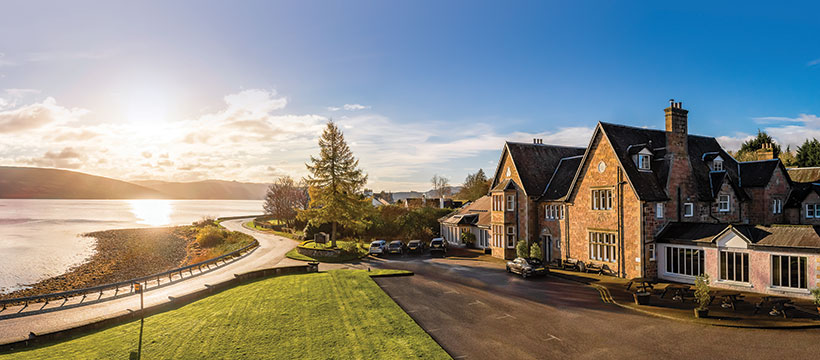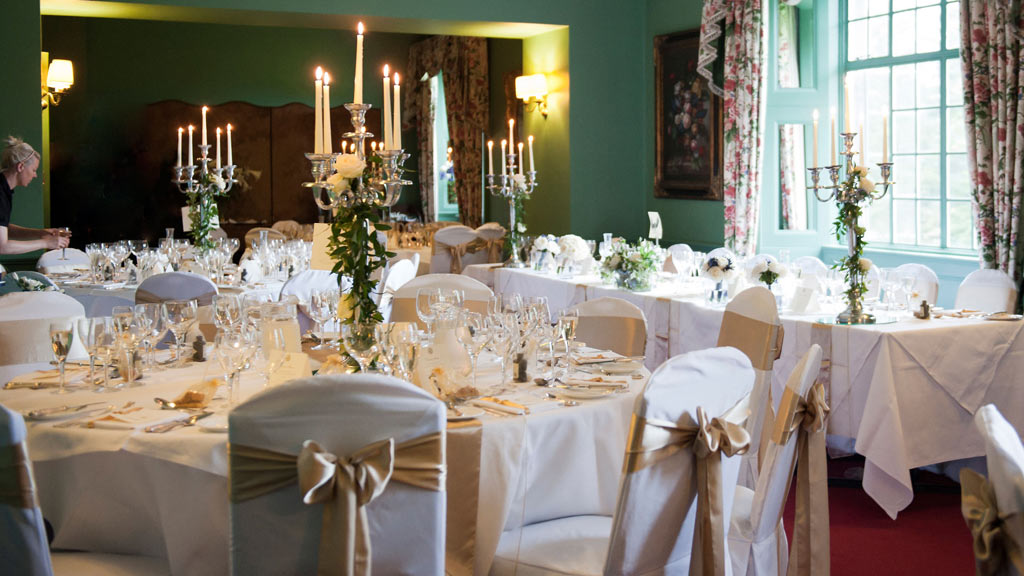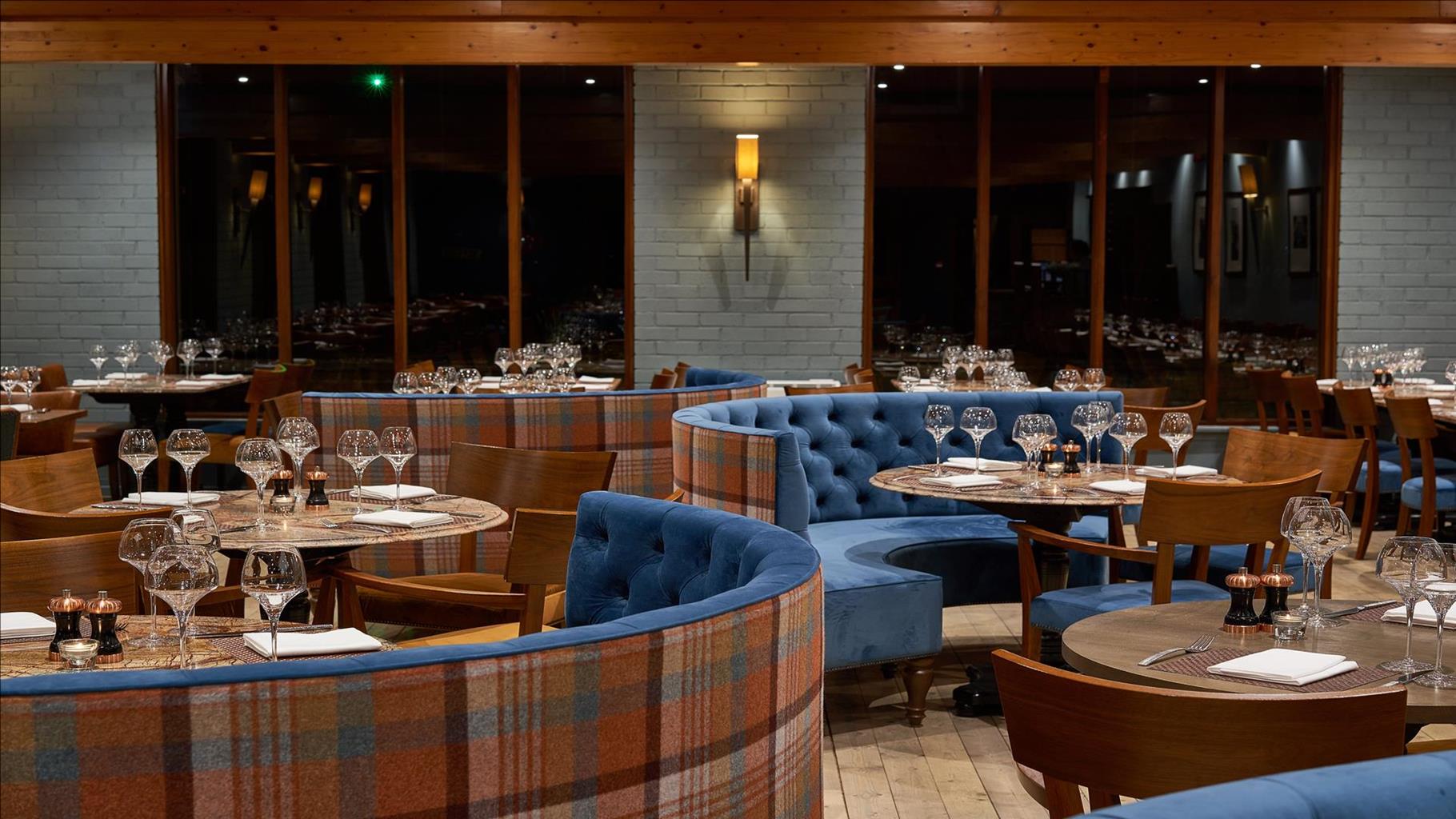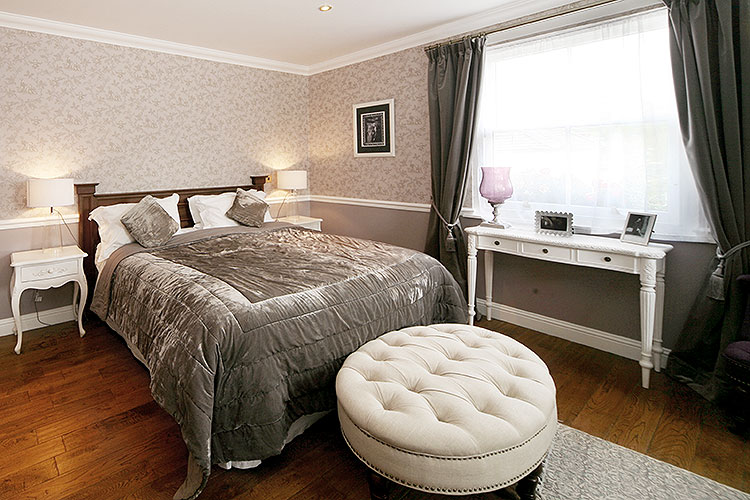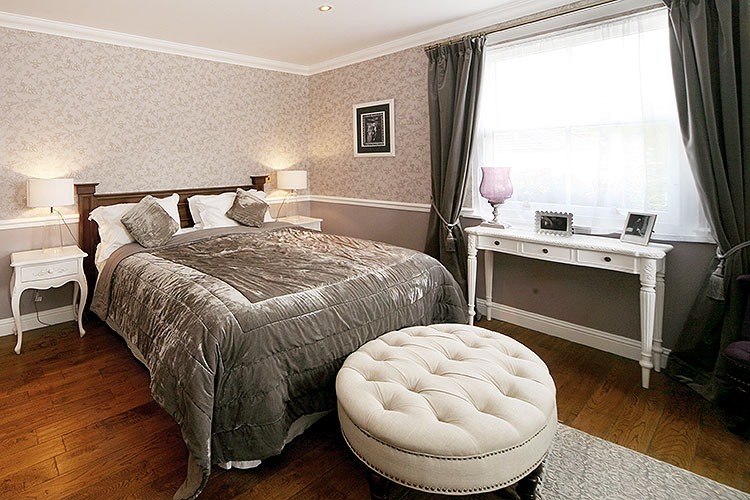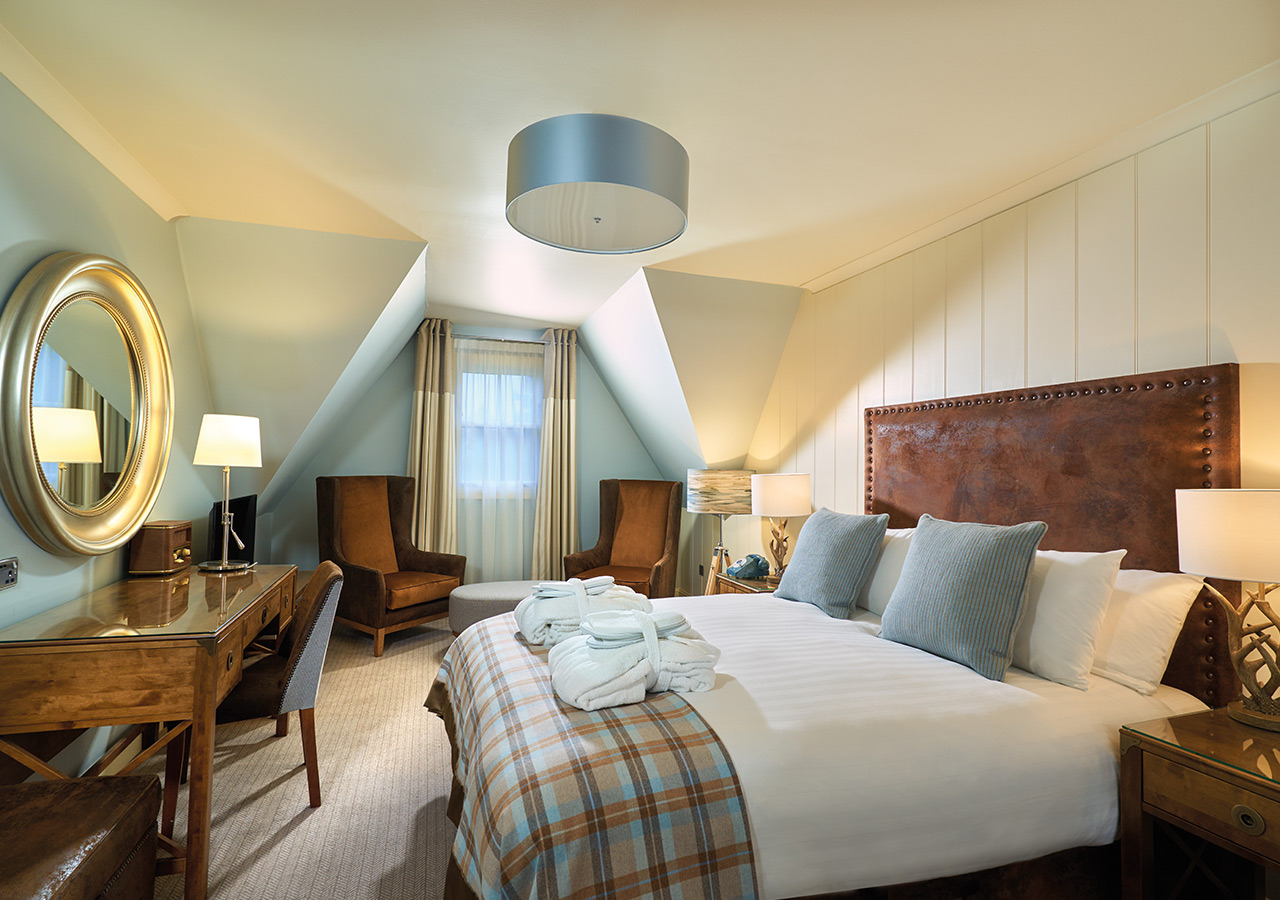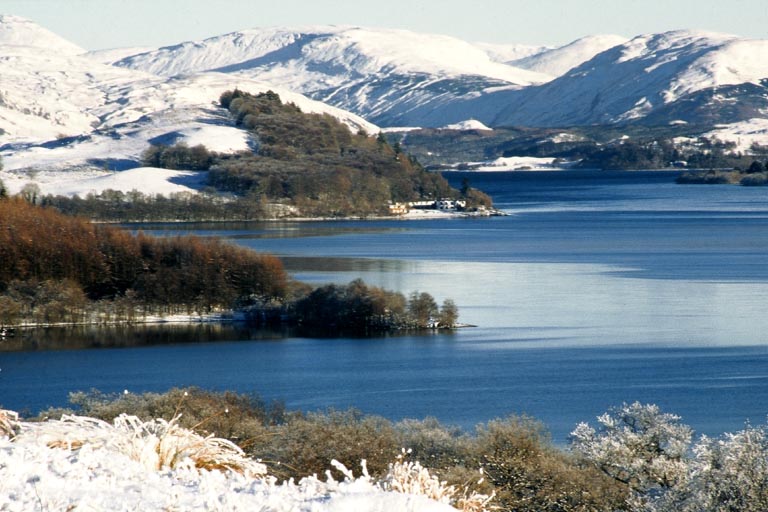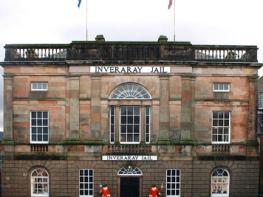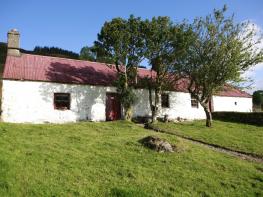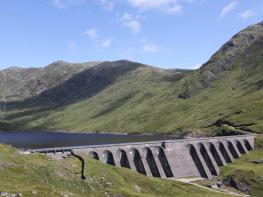The George Hotel is in the heart of Inveraray close to the edge of the majestic Loch Fyne and…
Climbing to the Castle of Cups

Dun na Cuaiche offers a fine view of Inveraray, Campbell capital of Argyll.
4.5 miles (7.2kms)
About the walk
Inveraray is the seat of the Duke of Argyll, chieftain of Clan Campbell. Thus it became, in the eyes of Campbells anyway, the capital of the southern Highlands.
The Campbells have come home
Until about 1600, the main power in the Highlands was MacDonald, Lord of the Isles. The Duke of Argyll aimed to take his place – by the normal methods of intrigue and armed attack on neighbouring clans, but also by collaboration with the legal government in Edinburgh and the King in London. Clan Campbell would hit you with fire and the sword, but also with a writ from the Privy Council. As a result they became the most powerful and the most universally disliked of all the clans.
In 1691, King William demanded an oath of loyalty from the rebellious Highland chieftains. MacIan of the Glen Coe MacDonalds was required to sign his oath in Inveraray. He hesitated over this visit to the capital of his hated rivals, and eventually arrived two days after the deadline. His delay was made the pretext for the Campbell-led Massacre of Glen Coe.
When a Campbell was murdered in Appin 60 years later, the suspect, James Stewart of the Glens, was tried at Inveraray before a jury of Campbells, with Argyll himself as judge. The hanging of Stewart, who was almost certainly innocent, is still resented in the MacDonald country.
Argyll rebuilds
With the breaking of the clan system in 1745, Argyll felt confident enough to pull down his fortified castle and rebuild in a grand residential style that suited a wealthy landowner who no longer needed to resort to violence to keep control over his lands.
The present building, greatly admired by Sir Walter Scott, is described as a country house in the style of a castle. Its grey stone, quarried from just above the town, is sombre, but tones well with the muted green and blue of the Campbell tartan.
The Duke of Argyll completed his ambitious rebuilding scheme with avenues and bridges; one of the bridges forms an elegant entry to the town on the A83. This walk crosses the Garden Bridge, designed by John Adam (1721–92) of the Scottish family of architects. To go with his new castle, Argyll decided he needed a new town – some say that old Inveraray was simply too closee to the castle. The whole layout of castle and town is seen from the summit of Dun na Cuaiche (Castle of Cups).
Walk directions
Follow the seafront past the Argyll Hotel and bear left towards Inveraray Castle. At the first junction, turn right past a football pitch with a standing stone. After the coach park on the left and the end wall of the castle on the right, the estate road on the left is signed 'Dun na Cuaiche'. It passes a memorial to clansmen who were killed for religious reasons in 1685, to reach the stone-arched Garden Bridge.
Just before the bridge, take a track down left to the riverside. It follows the river upstream around a bend, then runs through woods near the river, to exit at a road junction. Turn right, across a small road bridge over the river.
Over the bridge turn right on a tarmac estate track, then bear left on a rougher track. With open field on your left, you'll see a small gate into woods on the right – this will be the return route to the castle. Opposite this small gate, turn left up the open field, to rejoin the track above its zig-zag. Here a gate with stile alongside leads on up into woods.
Soon you pass some ruined buildings on your left. The uppermost of the three is a lime kiln. Limestone and coal were tipped into the top of the cylindrical structure on the side facing the path. The hearth opening where the fire was lit must have been on the opposite side, but is now buried. The track continues slanting uphill, with recent clear-felling giving views over forested low hill to the northwest. A circular, stone-built gatepost is above the track, and then it doubles back up to the right. As it passes through a disused wall there are two more circular gateposts. The track re-enters trees, and narrows to a well-built path with zig-zags up to the hilltop.
Wander up right to the true summit, before dropping a few steps to the shelter of the stone-built viewing hut just below. After enjoying views of Loch Fyne and Inveraray through the various draughty openings, descend the hill by the same track.
Past the lime kiln (passed earlier on the upward path) and the gate with a stile, fork right off the track, re-crossing it below to the small gate already noted. This leads into a wood. The path runs down to the Garden Bridge. Return along the castle driveway to Inveraray.
Additional information
Clear, mostly waymarked paths, 1 stile
Steep, wooded hill
Must be under control, on lead in castle grounds
OS Explorer 363 Cowal East
Pay-and-display, Inverarary Pier
Inverarary Pier and Castle
WALKING IN SAFETY
Read our tips to look after yourself and the environment when following this walk.
Find out more
Also in the area
About the area
Discover Argyll & Bute
This is a county that’s all about awe-inspiring landscapes and unique island cultures. Ex-Beatle Paul McCartney put the area on the map when he wrote Mull of Kintyre, recorded in 1977 with the local pipe band backing his group. Kintyre is a long, thin peninsula that points south from the mainland, sheltering the mouth of the Firth of Clyde from the open sea. It’s very nearly an island, with just a narrow isthmus connecting it with Knapdale, to the north.
Tucked away at the end of the Firth of Clyde, Bute has been the holiday playground for generations of Glaswegians and is home to some of the finest golden beaches anywhere on the west coast. It may not boast the wild mountain grandeur of some of Scotland’s other islands, but Bute is blessed with swathes of heathery moorland and a range of low, fertile hills, perfect for walking and studying the local wildlife. Such is the variety of landscapes that make up this county.
To experience the sights and sounds of the area, visit Dunoon in late August for the Cowal Highland Gathering, when more than 150 pipe bands from all over the world compete for prestigious trophies.
Nearby stays
Restaurants and Pubs
Nearby experiences
Recommended things to do
Why choose Rated Trips?
Your trusted guide to rated places across the UK
The best coverage
Discover more than 15,000 professionally rated places to stay, eat and visit from across the UK and Ireland.
Quality assured
Choose a place to stay safe in the knowledge that it has been expertly assessed by trained assessors.
Plan your next trip
Search by location or the type of place you're visiting to find your next ideal holiday experience.
Travel inspiration
Read our articles, city guides and recommended things to do for inspiration. We're here to help you explore the UK.





